Woodpeckers can be a real nuisance for many homeowners. The main problem with these birds is that they peck holes. The problem is not a big one if it is a tree – unless you want to protect that tree – but a very big one if woodpeckers are pecking on your wood house or the wood trim located on your home. There are 2 reasons they like to peck: to mark out the territory and in search of food.
3 Humane Steps on How To Get Rid of Woodpeckers Fast
All the problems with woodpeckers can be prevented if you check out our effective solutions that will 100% help you to eliminate those hairy birds. Here, we share 3 simple but effective steps to control woodpeckers making damage to your property.
Effective Method of Woodpeckers’ Exclusion: Net Them Off
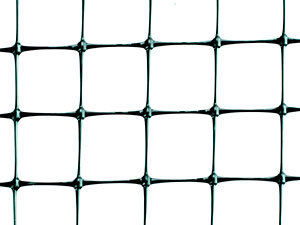 Visual deterrents are a good solution to keep the woodpeckers away. But, what if these products are relentless? In this case, you need more drastic measures – like netting.
Visual deterrents are a good solution to keep the woodpeckers away. But, what if these products are relentless? In this case, you need more drastic measures – like netting.Woodpecker netting can be installed on the side of a structure. It is made of lightweight plastic and acts as a physical barrier to block noisy woodpeckers from pecking.
Placing light-weight plastic netting is one of the most cost-effective methods of excluding noisy woodpeckers. A mesh of 3/4 inch is generally used. We recommend leaving at least 3 inches of space between the damaged building and the netting so that woodpeckers cannot cause damage through the mesh. You can find the best bird netting product in our expert review.
Netting is a 100% effective way to keep woodpeckers off your property.Excellent Pest Control: Ultrasonic Deterrents
 Of cause, you can use some great repellent spray to control woodpeckers. But we suggest using sound devices that can repel woodpeckers more effectively. Here is what you can use: Bird-X BirdXPeller PRO and Bird B Gone Bird Chase Super Sonic Deterrent.Woodpecker repellers work especially well when combined with putting visual deterrents like Bird Scare Tape directly on areas the woodpeckers are pecking.
Of cause, you can use some great repellent spray to control woodpeckers. But we suggest using sound devices that can repel woodpeckers more effectively. Here is what you can use: Bird-X BirdXPeller PRO and Bird B Gone Bird Chase Super Sonic Deterrent.Woodpecker repellers work especially well when combined with putting visual deterrents like Bird Scare Tape directly on areas the woodpeckers are pecking.Stop Woodpeckers From Returning: Visual Deterrents
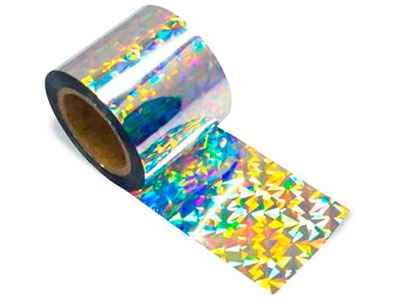 Scare tactics are very important when it comes to woodpecker control. Remember, these birds will become frightened or confused and will try to avoid treated areas if you will apply special control deterrents.
Scare tactics are very important when it comes to woodpecker control. Remember, these birds will become frightened or confused and will try to avoid treated areas if you will apply special control deterrents.Visual deterrents such as shiny reflective objects, balloons, and diverters can be hung in front of locations where pecking has occurred to scare the woodpeckers from returning.
We’ve decided to offer you the top 3 visual deterrents to pick from:
- Bird Scare Tape,
- Bird B Gone Woodpecker Deterrent Kit,
- Bird B Gone Reflective Scare Bird Diverter.
Use our tips and make your property less inviting to woodpeckers.
How to Kill: Is It Safe to Use a Woodpecker Poison?
Frankly speaking, there are no poisons specifically labeled for woodpeckers. These birds are known as federally protected migratory birds. You can’t kill them without a special license.
 Woodpeckers – known as wild birds – are protected by state and federal laws.
Woodpeckers – known as wild birds – are protected by state and federal laws.
This means that you cannot kill, poison, shoot, or capture woodpeckers without a permit.
Woodpeckers are beneficial birds and their elimination should be legal and safe. We don’t recommend you to poison these birds as poison can bring the danger of secondary or accidental poisoning of humans and pets.
However, you can remove these noisy birds with the help of humane products available to prevent problems with woodpeckers that are damaging your property.
Woodpeckers: General Characteristics, Distribution and Habitat
The woodpeckers belong to the family Picidae, the members of which are found worldwide except for New Zealand, New Guinea, Australia, Madagascar, and the extreme Poland regions. 21 species inhabit the USA.
Woodpeckers have sticky long tongues for extracting their food, long, sharp, and strong bills for drilling and drumming on trees, short legs, and stiff tail feathers serving as a supportive prop. Most male woodpecker species have prominent yellow or red head markings.
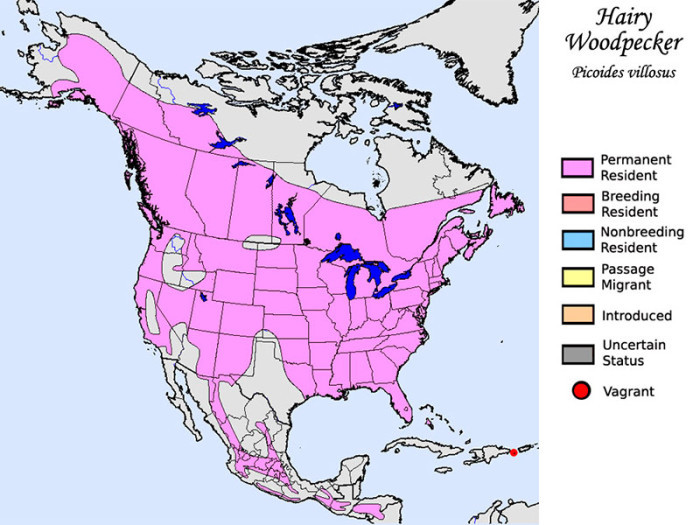
The woodpeckers have a cosmopolitan distribution. Although these birds reach their largest diversity in tropical rainforests, woodpeckers occur in almost all habitats including savannahs, woodlands, scrublands, and bamboo forests. Woodpeckers are more easily occupied in places where a small number of trees exist. Some species can spend a part of their time feeding on the ground. Only a small minority of species nest in holes in the ground and have abandoned trees entirely.
Feeding and Breeding
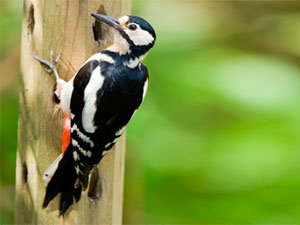 Woodpeckers’ diet consists mainly of insects taken from living and dead trees along with nuts, fruits and sap from live trees.
Woodpeckers’ diet consists mainly of insects taken from living and dead trees along with nuts, fruits and sap from live trees.
These birds keep trees healthy by protecting them from suffering from mass infestations.
Woodpeckers nest in cavities – usually in tree cavities. They also excavate nest holes in commercial and residential structures. Most species of woodpeckers excavate 1 hole per breeding season. A nest usually consists of 3-5 eggs which are incubated for about 2 weeks before the chicks are born.
Woodpecker Damage
What about woodpecker damage repair? The problem of woodpecker damage to buildings may be significant regionally and locally. Buildings or houses with wood exteriors in rural wooded settings or in suburbs near wooded areas are most apt to suffer hole and pecking damage. Usually, damage to a building involves only 1 or 2 birds, but it may involve up to 6 or 8 during a season.
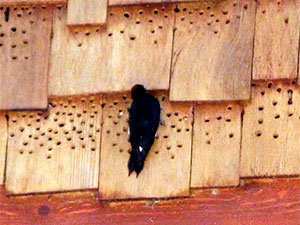 These noisy birds can be particularly destructive to vacation or summer homes that are vacant during some part of the year. This is because woodpeckers’ attacks often go unnoticed until serious damage has seen.
These noisy birds can be particularly destructive to vacation or summer homes that are vacant during some part of the year. This is because woodpeckers’ attacks often go unnoticed until serious damage has seen.
Most of the woodpeckers’ damage occurs from February through June, which corresponds with the period of territory establishment and the breeding season. Noise and property damage are 2 main woodpecker problems that you may experience. These birds are known to drill into wooden sheds, siding, fences, and decks as well as in some non-wooden objects. What’re more woodpeckers can hammer away for hours outside your windows.

Woodpeckers are colorful birds, but they do incredible damage to homes to the costly detriment of the homeowner. We saw a woodpecker hammer away at a home in our area, and the cursed pesky bird returned despite attempts to scare it off. There needs to be more animal control of these harmful birds than to look the other way while they cause incredible damage. That persistent bird made a hole in the house about the size of a large dinner plate, and now we see many in the area. Whether they are pecking at night, or flying about these nuisances need to be monitored and possibly culled instead of being a protected species.
Not just 2 reasons they peck on your house. They also peck on places to see if there hollow so they can build a house. I live in a log home and I have had to fix 3 inch holes in my fascia boards.
All woodpeckers are disrespectfull destructors and should be shot on sight. Anybody that thinks otherwise is a mental furball with a woodpecker brain.
Agree times 10. Major problem and costly to homeowner.
The ultrasonic devices don’t work. I put one on a flower box and a woodpecker pecked a nest 6 feet from one. The tape works for about a week then the woodpeckers ignore it.
Fred’s is the only comment that makes any sense. Jesus, people grow a pair. Kill. Kill. Kill.
Cellophane streamers work! And you probably have insects in your house that the birds are eating. Cutting all the trees creating a barren landscape, removes birds homes as well.
You guys are selfish unthinking folks. It is NOT all about you.
Some pecker headed woodpecker pecked a hole in my metal roof. How do I fix that before the next rain?
Woodpeckers literally do up to $10,000 a year of damage to our home with shingle siding. We live in northern MI.
The protected bird lol are the protectors paying for the damage to my home Tired of having 2inch diameter holes drilled through the stucco and insulation would rather relocate the pest than kill but at this point what ever comes first tired of the holes and could you send over the pecker lovers to repair my my stucco at there cost